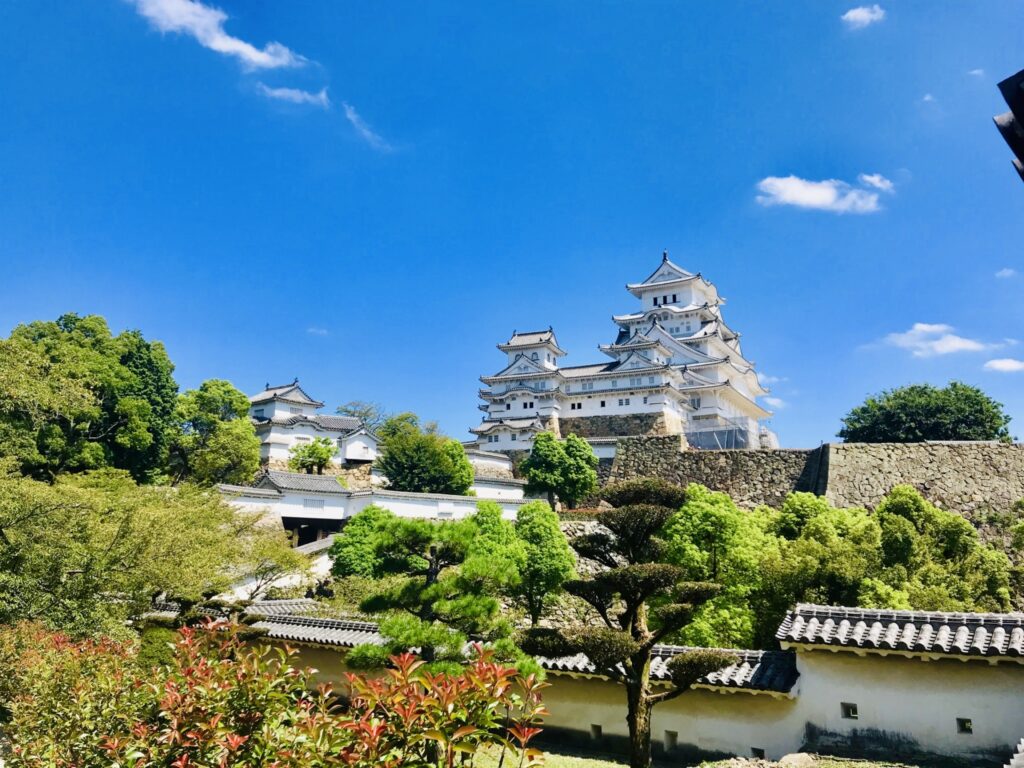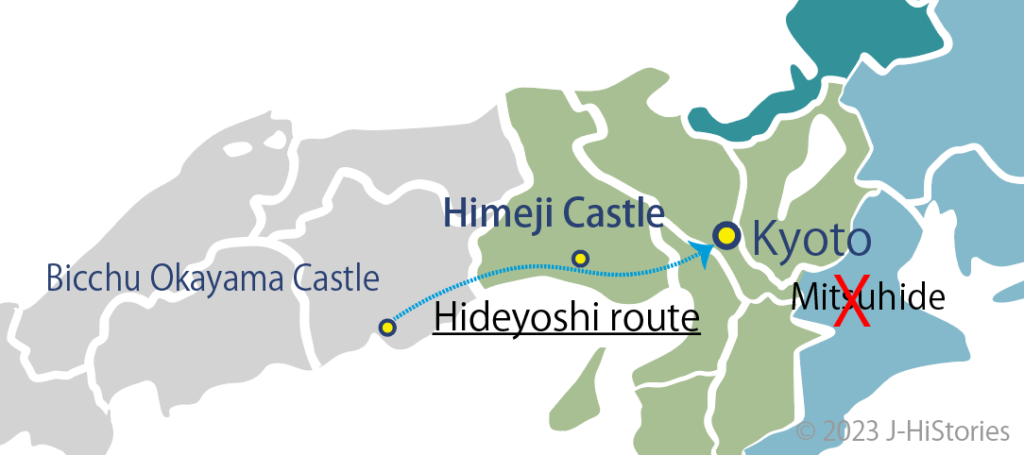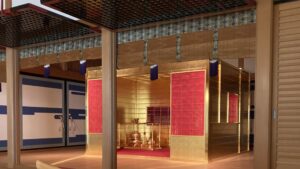Himeji Castle History: “Win without fighting" by overwhelming beauty and impregnable defense
Himeji Castle - a UNESCO World Heritage site and the National Treasure - enthralls you with its amazing architectural beauty coalition with dazzling white walls and roofs made from stucco. Its shape is like Shirasagi (White Heron) spreading its wings. Why was it necessary to renovate it so spectacularly beautiful? The 1st Shogun of Tokugawa Shogunate, Tokugawa Ieyasu (1543-1616, 徳川家康) aimed to warm against his enemies in western Japan as a wedge. Let’s see its story.

The inevitable tension between Tokugawa and Toyotomi clans
As a son-in-law of Ieyasu and a tough-as-nails Samurai, Ikeda Terumasa (1565-1613, 池田輝政) devoted himself to refurbishing the castle as a master of castle construction over nine years, starting in 1601. This was just one year after Ieyasu's victory in the Battle of Sekigahara against his final enemy, Toyotomi Hideyoshi’s very loyal vassal, Ishida Mitsunari (1560-1600, 石田三成). Ieyasu was on the brink of fulfilling his dream to settle the upheaval of the Warring States period (1467-1590) that had lasted for more than 120 years. Despite Tokugawa’s victory, several federal lords who had been under an obligation to the Toyotomi clan still held power in the western region of Japan. Furthermore, Hideyori (1593-1615, 豊臣秀頼), Toyotomi Hideyoshi's heir, was still at Osaka Castle and could have succeeded his father as the next ruler of Japan. Therefore, Himeji Castle was expanded and renovated as an impenetrable military facility at an important traffic point from the western regions to Osaka Castle, in order to keep these lords in check with its majestic beauty and defensive power.
The death of the most powerful Samurai, Nobunaga
Another reason is that Himeji Castle was Hideyoshi's primary castle stronghold in his quest to gain the ruler of Japan. This was the affair about 20 years before the battle of Sekigahara. Ieyasu's ally, Oda Nobunaga (1534-1582, 織田信長), possessed tremendous momentum to settle the turmoil of the war period and unify the nation with his military power. Meanwhile, Hideyoshi fought against the powerful western lord, the Mori clan, at Bicchu-Takamatsu Castle, located just 100 kilometers west of Himeji Castle, by Nobunaga's order. During that time, Hideyoshi received the startling news of Nobunaga’s death, which had been caused by his retainer, Akechi Mitsuhide (1526-1582, 明智光秀) in Kyoto (Honnoji incident). This happened just before Nobunaga brought the warring world to an end.
The money and rice stockpiled in Himeji Castle brought victory to Hideyoshi
Seeking vengeance for his lord's death, Hideyoshi quickly made peace with the Mori clan and hastily returned to Kyoto. Along the way, he stopped at Himeji Castle and distributed all of the money and rice stockpiled there to his approximately 20,000 officers and warriors, encouraging them to march non-stop to Kyoto. Hideyoshi’s army covered a distance of over 200 km in just 8 days, marching at an astonishing speed of 25 km per day. Upon returning to Kyoto with remarkable speed, Hideyoshi rallied his troops around the cause of "revenge against his lord's murderer" and defeated Mitsuhide in the Battle of Yamazaki, south of Kyoto. Subsequently, Hideyoshi succeeded to become Nobunaga’s successor as the ruler of Japan with his wisdom. (Note: Another theory suggests that Hideyoshi and some of his vassals traveled by boat across part of the Seto Inland Sea with weapons and other items.)

Ieyasu fell behind Hideyoshi
Meanwhile, Ieyasu heard about Nobunaga’s death during his sightseeing in Sakai City, which Nobunaga recommended to him. He quickly fled Sakai and made his way to his home castle, traversing the perilous path through Iga province (though there are various theories about the route he took). This route was dangerous being hunted down by farmers as defeated warriors. Ieyasu fell behind Hideyoshi in the race to defeat Mitsuhide. Consequently, Hideyoshi became Nobunaga’s successor. Ieyasu had to wait for almost 30 years, until the Siege of Osaka in 1615, to become the ruler of Japan. For Ieyasu, completely renovating Himeji Castle might have been equivalent to erasing the castle that propelled Hideyoshi to power.
No-War to ensure peace and tranquility in the nation
Himeji Castle represented Ieyasu's desire to "win without fighting” through its overwhelming grace and impregnable defense. In fact, the castle had never been drawn into the battle since its establishment in the 14th century, even throughout the turbulent age of provincial wars that lasted for around 300 years. As you walk through the expansive and beautiful grounds of Himeji Castle, take a moment to reflect on both Ieyasu’s strategic vision and Hideyoshi’s remarkable wisdom as they ran through the Warring States period.
Nobunaga, Hideyoshi, Ieyasu Timeline
| Nobunaga | Hideyoshi | Ieyasu | Period | ||
| 1336 | Ashikaga Takauji estabilished Muromachi Shogunate | Muromachi - Azuchi Momoyama (Warring State) |
|||
| 1467 | Onin War started (- 1477) | ||||
| 1534 | Nobunaga was born in Owari province | 1 | |||
| 1537 | Hideyoshi was born in Nagoya | 1 | |||
| 1542 | Ieyasu was born in Okazaki province | 1 | |||
| 1547 | Ieyasu was sent to Imagawa’s Sunpu castle as a hostage by his father | 6 | |||
| 1560 | Nobunaga defeated Imagawa Yoshimoto at the battle of Okehazama | 27 | 23 | 19 | |
| 1561 | Ieyasu made an alliance with Nobunaga | 20 | |||
| 1573 | Muromachi Shogunate ended | 31 | Azuchi Momoyama | ||
| 1575 | Oda-Tokugawa allied completely defeated the Takeda clan at the battle of Nagashino | 42 | 38 | 34 | |
| 1582 | Nobunaga was killed at Honnoji by Akechi Mitsuhide | 49 | 45 | 41 | |
| 1582 | Ieyasu returned to his castle through crossing the pathless route | 41 | |||
| 1590 | Ieyasu moved to Edo according to Hideyoshi's order | 49 | |||
| 1598 | Hideyoshi passed away | 61 | 57 | ||
| 1600 | Tokugawa Ieyasu defeated Ishida Mitsunari, Hideyoshi's right arm at the battle of Sekigahara | 59 | |||
| 1601 | Ieyasu started the renovation of Himeji Castle | 60 | |||
| 1603 | Ieyasu estabished Tokugawa Shogunate at Edo | 62 | Edo | ||
| 1603 | Ieyasu built Nijo-jo Caslte | 62 | |||
| 1610 | Renovation of Himeji Castle was completed | 69 | |||
| 1614 | The Winter Siege of Osaka between Tokugawa and Toyotomi | 73 | |||
| 1615 | Toyotomi's Osaka Castle burnt down to the ground at the Summer Siege of Osaka | 74 | |||
| 1616 | Ieyasu passed away at the age of 75 | 75 |


